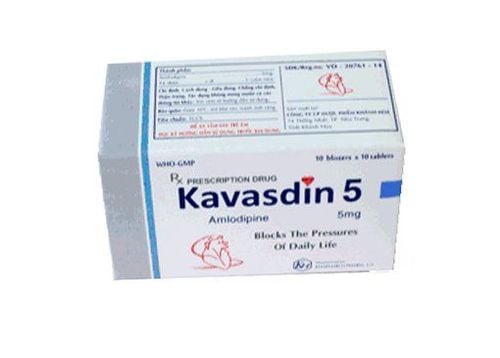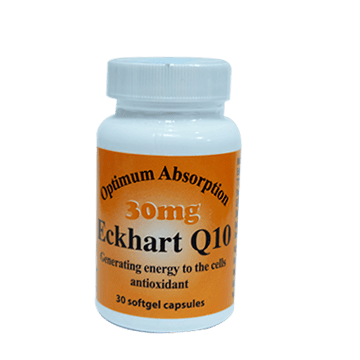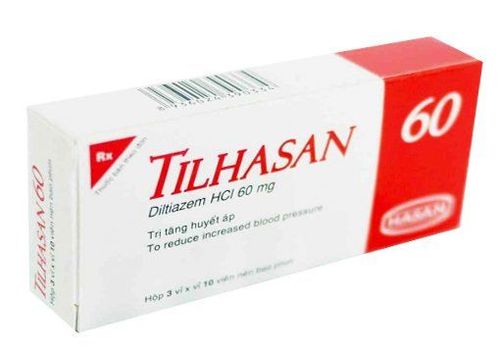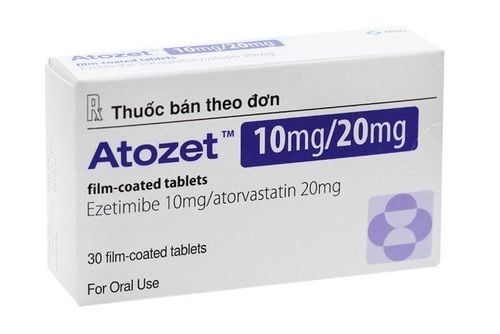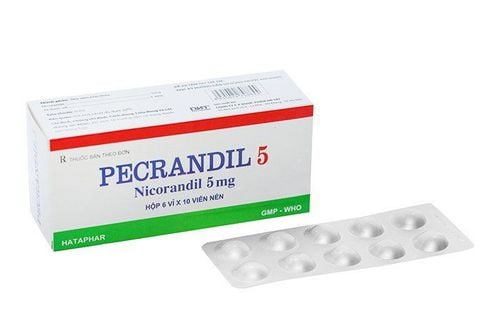This is an automatically translated article.
The article was professionally consulted with Specialist Doctor II Nguyen Quoc Viet - Interventional Cardiologist - Department of Medical Examination & Internal Medicine - Vinmec Danang International General Hospital.1. What is acute coronary syndrome?
Acute coronary syndrome is also known simply as acute coronary syndrome. The disease is classified into 3 types as follows:ST-elevation acute myocardial infarction (STEMI); Non-ST-elevation acute coronary syndrome (NSTEMI). In particular, non-ST-segment elevation acute coronary syndrome is divided into two types: non-ST-elevation myocardial infarction and unstable angina.
In fact, there is no difference between clinical and laboratory electrocardiographic findings. The distinguishing feature of these two conditions is that non-ST-segment elevation myocardial infarction has elevation of myocardial biomarkers (such as troponinT or I), while unstable angina is absent. this increase in test results.
2. Where does acute coronary syndrome originate?
Acute coronary syndrome without ST-segment elevation originates from the unstable state of atherosclerotic plaques inside the vessel lumen, at this time the plaques are broken open, this phenomenon is also seen in infarction However, the severity and course of the acute coronary syndrome without ST-segment elevation and acute myocardial infarction are different.
If the rupture of the atherosclerotic plaque occurs large, leading to massive blood clot formation covering the entire lumen, then it will cause a transmural myocardial infarction, also known as an ST segment myocardial infarction. difference. When the rupture of the atherosclerotic plaque becomes smaller, a blood clot forms but does not result in complete occlusion of the coronary artery, which is then defined as an acute coronary syndrome without ST-segment elevation. and non-Q wave myocardial infarction.
Small migratory thrombus may lead to posterior microvascular occlusion combined with constriction that will aggravate the patient's myocardial ischemia, although However, if an acute coronary syndrome without ST-segment elevation occurs, the disease can be severe and lead to an actual myocardial infarction. Blood clot formation is understood as when the atherosclerotic plaque on the vessel wall ruptures, the subendothelial layer is exposed to facilitate contact with platelets, thereby activating the surface GP IIb/IIIa receptor. promote platelet aggregation. Platelets after agglutination release a series of chemical mediators that cause vasoconstriction and faster clot formation. When a blood clot forms inside a vessel, it severely reduces blood flow to the area of the heart muscle that is nourished by that coronary artery, causing unstable chest pain. The electrocardiogram shows acute myocardial ischemia with ST-segment depression or a sharp T-wave pattern. In addition, troponin-type cardiac enzymes can be elevated in the presence of severe myocardial ischemia causing necrosis of the distal and non-transmural myocardium, and when CK-MB is also elevated, this is referred to as myocardial infarction. the heart does not have Q waves.
Several factors can aggravate the condition: Fever, high blood pressure, arrhythmia, hyperthyroidism.
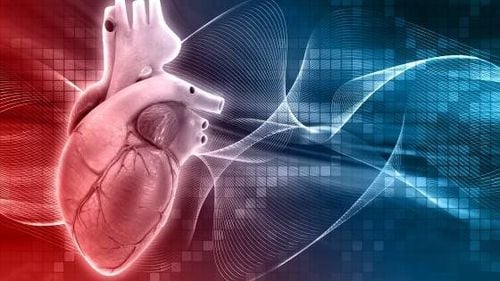
3. What are the diagnostic criteria for acute coronary syndrome?
3.1. Clinical characteristics of patients with acute coronary syndrome
When compared with patients with myocardial infarction, patients with ACS without ST-segment elevation are often older, have a higher co-morbidity with diabetes, and have comorbidities. Following that, hypertension and dyslipidemia were also more common in patients. After myocardial infarction or after coronary interventional procedures, patients with acute coronary syndromes without ST-segment elevation are also more common.
The typical symptom of acute coronary syndrome is coronary-type chest pain with the following characteristics of pain: tightness and a feeling of squeezing in the position behind the sternum. May spread to the left shoulder, to the chin, then gradually to both shoulders, the pain usually occurs after the patient performs strenuous movements, but the pain can still occur even when the patient is in bed. At rest, the pain usually lasts more than 20 minutes.
Pain in acute coronary syndromes without ST-segment elevation can have different forms:
New-onset angina; Increased angina (the patient has a history of stable angina); Angina after events or procedures: Chest pain after myocardial infarction, pain after coronary intervention, pain after coronary bypass surgery; The symptoms of angina are not clear, but the patient only feels pressure, heaviness, shortness of breath (silent pain).

3.2. Subclinical diagnosis of acute coronary syndrome
Electrocardiogram:When pain is ongoing, ST segment changes can be observed: ST segment depression (most commonly a downward sloping pattern), sharp T-wave inversion, possible ST segment If there is transient ST-segment elevation or if left bundle branch block is present, myocardial infarction should be considered immediately. In clinical practice, up to 20% of patients do not have any immediate changes in the electrocardiogram image, so for an accurate diagnosis, it is necessary to perform multiple electrocardiograms. Distinguishing unstable angina from acute myocardial infarction without ST elevation is based on changes in biomarkers. Cardiac biomarker:
Used as a standard for diagnosing acute coronary syndromes, risk stratifying and monitoring disease progression, that is Troponin T or I. Echocardiography:
Evaluation of Regional movement disorders, assessment of left ventricular function, and actual valvular pathology accompany or support the differential diagnosis. Exercise testing:
When a diagnosis of acute coronary syndrome without ST-segment elevation is confirmed, a stress test is not indicated due to the unstable nature of the disease; This test is only ordered when the patient is in the low-risk group, the symptoms are atypical, there are no typical changes on the electrocardiogram, and the patient is on stable treatment (after 5 days). Coronary angiography:
The goal is to intervene with coronary arteries if possible, therefore coronary angiography in acute coronary syndromes without ST-segment elevation is indicated only in very high-risk patients. tall, tall or medium.
4. Treatment of acute coronary syndrome
Pre-hospital treatment measures:For the patient to limit movement or absolutely rest in place, Oxygen, Use aspirin, vasodilator nitrates and/or relieve chest pain with morphine; Quickly transport patients safely to a hospital. Treatment in hospital:
Use of drugs such as dual antiplatelet therapy, angina relievers, anticoagulants and some other drugs; Coronary angiography to evaluate coronary artery anatomy; Reperfusion treatments: Use of fibrinolytics, coronary intervention, or coronary artery bypass graft surgery. Supportive care for patients with acute coronary syndrome:
Cardiovascular rehabilitation after hospital discharge; Management of chronic coronary artery disease; Using drugs to treat, prevent recurrent myocardial infarction, reduce pressure on the heart and treat complications after infarction; Treatment of comorbidities and disorders such as heart failure, anemia, hypertension, diabetes ... The chest pain of acute coronary syndrome is mostly relieved within 12 to 24 hours if given. suitable treatment. Therefore, if the patient has any chest pain that does not subside or recurs afterwards, it is advisable to visit a medical facility to diagnose and find out the cause.
Currently, Cardiovascular Center - Vinmec International General Hospital is one of the leading centers in the country for examination, diagnosis, screening and treatment of cardiovascular diseases. Vinmec not only has the convergence of a team of experienced and reputable leading experts in the field of surgical treatment, internal medicine, interventional cardiac catheterization, but also has a system of modern equipment, on par with The most prestigious hospitals in the world such as: MRI 3 Tesla (Siemens), CT 640 (Toshiba), high-end endoscopy equipment EVIS EXERA III (Olympus Japan), high anesthesia system Avace level, Hybrid operating room according to international standards... Especially, with the space designed according to 5-star hotel standards, Vinmec ensures to bring patients the most comfort, friendliness and peace of mind. .
Please dial HOTLINE for more information or register for an appointment HERE. Download MyVinmec app to make appointments faster and to manage your bookings easily.





